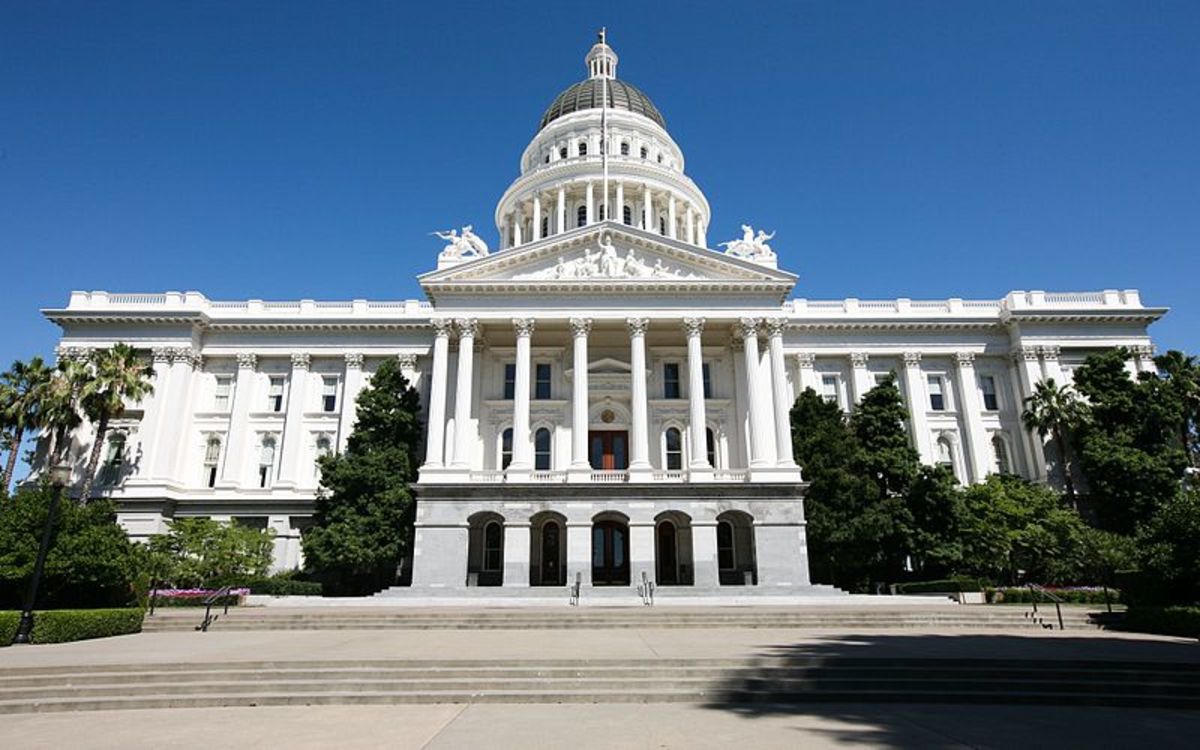How Pension Reform Could Save Teacher Pay

It is a truth universally acknowledged that a young teacher in possession of a bachelor’s degree must be in want of a higher salary. Last week, we discussed (and critiqued) two solutions to reform teacher earnings: pay for performance and across-the-board raises. But the question still remains: why are teachers paid so little?
It turns out that a system originally set up to ensure teachers’ financial security has, ironically, dragged down their salaries. This system, designed to ensure a steady supply of funds to teachers when they become old enough to yell “get off my lawn”, has consistently failed to deliver on its promises, forcing teachers and taxpayers to foot the bill. It is called the pension system.
This is the second and final part of a series on teacher pay. You can read part one here.
Pension basics
What is a pension?
A pension is a type of retirement plan, meaning it exists to make sure you have money when your body becomes too old to work. Other such plans include Individual Retirement Arrangements (IRAs), 401(k)s, and Simplified Employee Pensions (SEPs).
How pensions work
To keep things simple, I’ll focus on Minnesota’s pension system; the numbers vary between states, but the basic blueprint is the same. In Minnesota, teachers are automatically enrolled in pensions. Every time they get paid, both they and their employers make mandatory payments to a common pool of money called the pension fund.
The pension fund is professionally managed; it’s an organization with accountants, financial analysts, and probably even janitors. In Minnesota, it’s called the Teachers’ Retirement Association; it likely has a name in your state too. These people make sure the giant pool of money isn’t just sitting there; they invest it in stocks, private equity, treasuries, the money market, and other financial assets to make sure it grows.
When you retire, you receive an amount of money (determined by a formula) from your pension each month for the rest of your life. This is called a benefit. However, you need to teach for at least five years in Minnesota to collect pension benefits; otherwise you get nothing!
Underfunding
During the 1990s, the economy was booming, and retirement plans were consistently earning higher-than-expected returns. In response, many states increased teachers’ retirement benefits, including for past service, thinking, “We’ll definitely be able to pay for it!” Alas, they did not set aside enough money in case the economy did poorly – which, as we know, it did several times (McGee, 2016). Most pension funds are seriously in debt – so much so that, of every $100 paid into pension funds, $70 goes to paying off existing debt (Aldeman, 2018).
Why are pensions underfunded?
Still, states maintain generous promises and fail to fund them responsibly. You can thank the labor clique for that – public employee unions (including teachers’ unions) and their allies. Pension boards usually have seats reserved for workers, who aren’t accustomed to making policy decisions. But don’t worry – unions and other interest groups take the initiative to “inform” and “coach” those workers before sending them to the decision-making table.
It may seem counterintuitive, but as Anzia and Moe (2019) pointed out, public employees do have reasons to underfund their own pensions. Underfunding creates the illusion that pensions are cheap, making them more palatable to voters. It “frees up” money that unions can demand be diverted to salaries or healthcare benefits.
Of course, this is only true in the same way that procrastinating on writing your blog “frees up” time to watch YouTube: you aren’t addressing your actual responsibility, and there will be negative consequences later. (This example is, of course, purely fictional.)
How do pensions drag down teacher pay?
Basically, the more pension debt there is, the more schools have dip into other parts of their budget. McGee (2016) has shown that teacher salaries – as well as school supplies and school maintenance – have suffered tremendously due to rising pension costs. Teachers’ inflation-adjusted pay has been essentially flat since 1996 (Allegretto & Mishel, 2019). In other words: because our leaders made poor financial decisions, we are effectively short-changing current teachers and students to pay for past teaching service – a choice we should not have to be making.
Pensions have strings attached
Still, many teachers like their pensions because they think they’re getting a good deal. But pensions come with many strings attached. Most benefits accrue at the end, which means that teachers whose careers are interrupted or take them to another state lose out. This video from TeacherPensions.org explains the problem:
Pension reform
Both the accountability and labor cliques explored in part 1 have missed the pension crisis. In fact, labor clique actively worsens it. Yet this is the main factor keeping teacher pay low.
It seems to me that the only way to proceed is to reform the pension system. We should of course pay benefits we’ve already promised, but the system should be phased out and replaced with a more sustainable retirement program.
Criteria for a solution
It’s not enough to replace pensions with 401(k) or 403(b) plans. As Hatch (2012) and Johnson (2015) pointed out, these plans have problems too. Ideally, a replacement for teacher pensions should satisfy the following criteria, inspired by Hatch (2012). The retirement plan:
-
Must be affordable to employers, teachers, and taxpayers.
-
Must not impose costs on future taxpayers, employers, or teachers for past service.
-
Should provide predictable retirement income for teachers.
-
Must be transmissible across state lines.
Annuity plan
In 2013, Senator Orrin Hatch introduced a bill that met all four of those criteria – the Secure Annuities for Employee (SAFE) Retirement Act of 2013 (S. 1270, 113th Cong.). Although the SAFE Retirement Act didn’t pass, it provides a good blueprint for a pension replacement.
This new retirement plan is called an “annuity plan” and works as follows. Basically, teachers and their employers contribute to a retirement plan each year, similar to a pension or 401(k). However, instead of depositing that money into a pension fund, employers would purchase a private-sector product called an annuity for each employee.
An annuity works like this: you pay a life insurance company now, and they promise to pay you every month from a certain date (in this case, your 67th birthday) until you die. This plan has many benefits – first, unlike pensions, annuities can be transported across state lines. Second, the investment risk is borne by private companies, so teacher salaries are not weighed down if the investments perform poorly. Third, teachers would still receive predictable benefits as though they had a pension, even if they miss a few years of teaching. Fourth, this system could not be underfunded as the pension system was, since the life insurance industry does not accept IOUs for annuities.
Final thoughts
This solution is not perfect. It has never been tried, and the labor clique is likely to resist it. Indeed, the SAFE Retirement Act did not pass Congress.
Nevertheless, action is needed. If we make it clear that reforming the pension system is the most sustainable way to raise teacher pay, and that teachers can still have predictable benefits when doing so, perhaps this problem is, indeed, solvable.
References
Aldeman, C. and Rotherham, A.J. (2014). Friends Without Benefits: How States Systematically Shortchange Teachers’ Retirement and Threaten Their Retirement Security. Report, Bellwether Education Partners, Sudbury, MA. URL: bellwethereducation.org/publication/friends-without-benefits-how-states-systematically-shortchange-teachers’-retirement-and
Aldeman, C. (2018, April 9). Teachers Have the Nation’s Highest Retirement Costs. But They’ll Never See the Benefits. The 74. URL: www.the74million.org/article/aldeman-teachers-have-the-nations-highest-retirement-costs-but-theyll-never-see-the-benefits
Allegretto, S. and Mishel, L. (2019). The Teacher Weekly Wage Penalty Hit 21.4 Percent in 2018, a Record High. Report, Economic Policy Institute, Washington, DC. URL: epi.org/165729
Anzia, S.F. and Moe, T.M. (2019). Interest Groups on the Inside: The Governance of Public Pension Funds. Perspectives on Politics 17(4) 1059-1078. DOI: 10.1017/s1537592718003468
Hatch, Orrin. (2012). State and Local Government Defined Benefit Pension Plans: The Pension Debt Crisis that Threatens America. Report, United States Senate Committee on Finance, Washington, DC. URL: www.cafsti.org/wp-content/uploads/briefingroom/Hatch-Report-The-Pension-Debt-Crisis-that-Threatens-America.pdf
Johnson, R.W. (2015). Reforming Government Pensions to Better Distribute Benefits. Report, Urban Institute, Washington, DC. URL: www.urban.org/research/publication/reforming-government-pensions-better-distribute-benefits
McGee, J.B. (2016). Feeling the Squeeze: Pension Costs Are Crowding Out Education Spending. Report, Manhattan Institute, New York, NY. URL: www.manhattan-institute.org/html/feeling-squeeze-pension-costs-are-crowding-out-education-spending-9368.html
Secure Annuities for Employee (SAFE) Retirement Act of 2013, S. 1270, 113th Cong. (2013).








